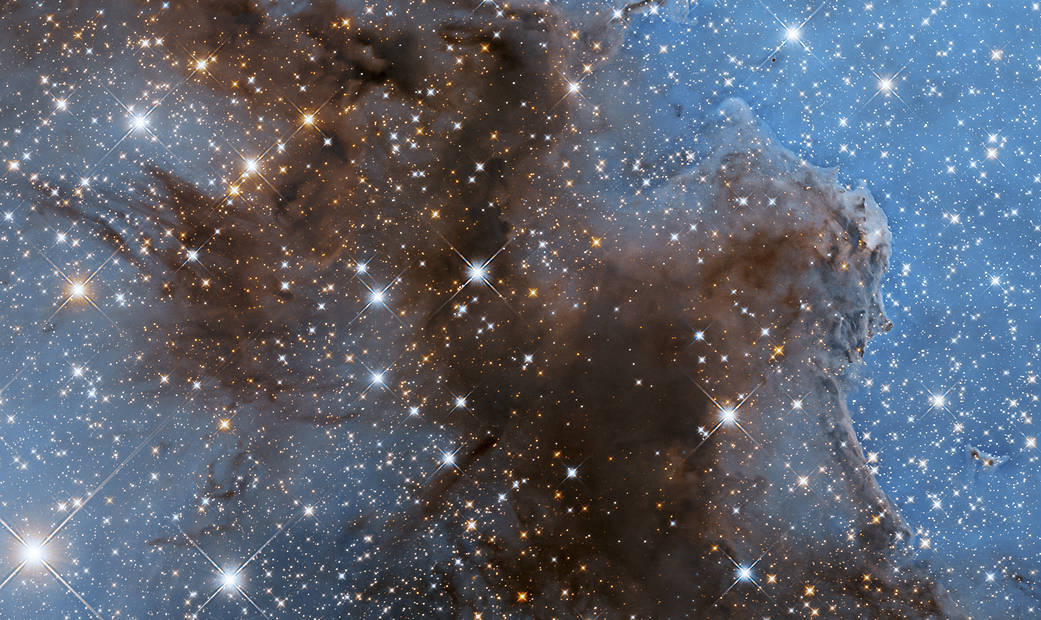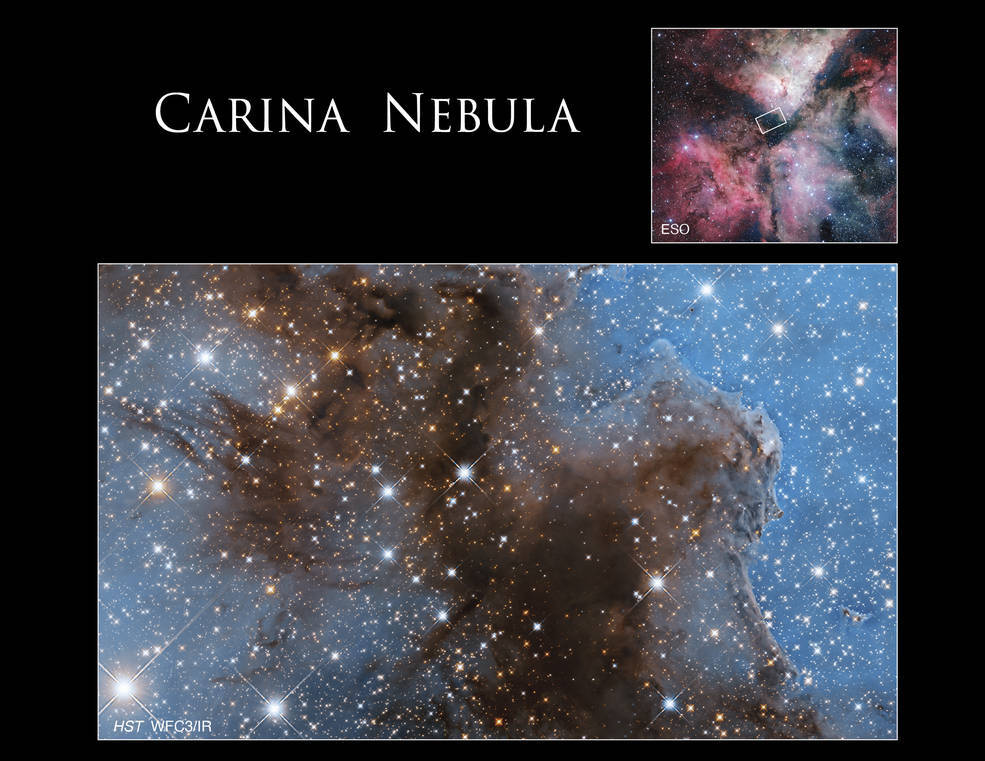16.12.2022

This sparkling new image depicts a small section of the Carina Nebula, one of the NASA Hubble Space Telescope’s most-imaged objects. The Carina Nebula, NGC 3372, is an enormous cloud of gas and dust home to several massive and bright stars, including at least a dozen that are 50 to 100 times the mass of our Sun. It is an emission nebula, meaning that the intense radiation from its stars ionizes the gas and causes it to glow. That gas is widely and thinly spread out over a large area, earning it the added designation of a diffuse nebula. Carina is a dynamic area of the sky with bursts of star formation occurring alongside star death. As stars form and produce ultraviolet radiation, their stellar winds disperse the gas and dust around them, sometimes forming dark, dusty cloaks and sometimes creating empty patches for the stars to become clearly visible.
To take this image of the Carina Nebula, scientists relied on Hubble’s infrared light imaging capabilities, which detect longer wavelengths of light not scattered by the heavy dust and gas surrounding the stars. This image shows only a small section of the nebula, located near the center in an area with thinner gas. Due to the nebula’s enormous size – about 300 light-years – astronomers can only study it in sections, piecing together the data from separate images to get an understanding of the nebula’s large-scale structure and composition. The Carina Nebula is visible with the unaided eye from Earth’s southern hemisphere.
The Carina Nebula is about 7,500 light-years from Earth in the southern constellation Carina, the Keel. Astronomers have given it many nicknames over the past few hundred years, including the Grand Nebula and the Eta Carinae Nebula for the bright star at its heart. It was originally discovered from the Cape of Good Hope, South Africa by Nicolas Louis de Lacaille in 1752.

Main/Top Image Credit: NASA, ESA, and A. Kraus (University of Texas at Austin); Processing: Gladys Kober (NASA/Catholic University of America)
Quelle: NASA
